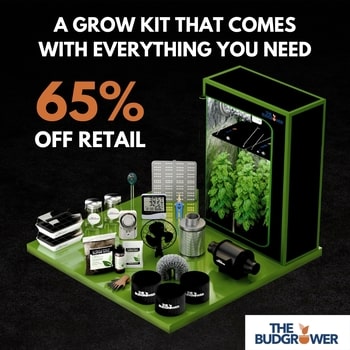Have you ever wondered what the perfect temperature is for growing plants in an indoor grow box? Well, look no further! In this article, we will explore the ideal temperature range for promoting optimal growth and health of your plants in a grow box. Let’s explore the perfect temperature range for growing plants in a grow box.
Importance of Temperature for Plant Growth
Before we delve into the ideal temperature range for your grow box, let’s first understand why temperature is crucial for plant growth. Plants rely on temperature for various physiological processes, including photosynthesis, respiration, and transpiration. When the temperature is too cold or hot, plants can experience stress, hindering their growth and development. Therefore, maintaining the right temperature in your grow box is essential for ensuring healthy and productive plants.
Effects of Temperature on Plant Growth
Temperature plays a crucial role in influencing plant growth and development. Here are a few ways in which temperature affects plants:
- Photosynthesis: Temperature directly impacts the rate of photosynthesis in plants. Low temperatures can slow photosynthesis, while high temperatures can inhibit the process altogether.
- Respiration: Temperature affects plant respiration rate, giving them the energy needed to grow and thrive.
- Transpiration: Temperature influences the rate of transpiration, which is how plants release water vapor through their leaves.
- Growth and Development: Temperature can impact plant growth and development, including germination, flowering, and fruiting.
Optimal Temperature Range for Plant Growth
Different plants have different temperature requirements based on their species and growth stage. However, most commonly grown plants thrive in a temperature range of 65-80°F (18-26°C). This temperature range gives plants the ideal conditions for photosynthesis, respiration, and transpiration, allowing them to grow and develop optimally.
Ideal Temperature Range for Seed Germination
Seed germination is a critical stage in a plant’s life cycle. During this stage, seeds sprout and develop into seedlings, which eventually grow into mature plants. Temperature plays a crucial role in seed germination, as it can influence the rate and success of this process.
Optimal Temperature for Seed Germination
Most seeds germinate best within a specific temperature range. For most plants, the ideal temperature range for seed germination is between 70 to 85 degrees Fahrenheit (21 to 29 degrees Celsius). However, some seeds may have specific temperature requirements, so it is essential to research the ideal germination temperature for the plants you are growing.
Importance of Consistent Temperature
Maintaining a consistent temperature is crucial for successful seed germination. Fluctuations in temperature can cause stress to the seeds and hinder germination. To ensure optimal conditions for germination, use a seedling heat mat or a temperature-controlled grow box to provide a stable and warm environment for your seeds.
Temperature Requirements for Vegetative Growth
Once the seeds have germinated and the seedlings have emerged, they enter the vegetative growth stage. During this stage, plants build their structure and develop leaves and stems. Temperature plays a vital role in vegetative growth, influencing the plant’s growth rate, leaf development, and overall health.
Optimal Temperature for Vegetative Growth
For most plants, the ideal temperature range for vegetative growth is between 70°F and 80°F (21°C to 27°C). This temperature range gives plants the warmth and energy they need to thrive and produce lush foliage. However, some plants may have specific temperature preferences, so it is essential to research the temperature requirements of the plants you are growing.
Importance of Light and Temperature
In addition to temperature, light plays a significant role in vegetative growth. Plants require light and temperature to undergo photosynthesis, which is essential for growth and development. Ensure that your grow box provides the right balance of light and temperature to support healthy vegetative growth in your plants.
Flowering and Fruit Development Temperature Requirements
As plants mature and enter the flowering and fruiting stage, their temperature requirements may change. Flowering and fruit development are crucial stages in the plant’s life cycle, as they determine its reproductive success and yield. Temperature is critical in these stages, influencing flower formation, pollination, and fruit development.
Optimal Temperature for Flowering
Plants require specific temperature conditions to initiate and promote flower formation during flowering. Most flowering plants thrive in a temperature range of 84 – 85 °F during the day and slightly cooler temperatures at night. Providing the right temperature conditions during the flowering stage can encourage robust flower production and increase the chances of successful pollination.
Optimal Temperature for Fruit Development
Once flowers have been pollinated, plants enter the fruit development stage, where the fertilized flowers grow into mature fruits. Temperature is crucial during this stage, influencing fruit size, quality, and flavor. Most fruiting plants prefer daytime temperatures between 70°F and 80°F (21°C to 27°C) for optimal fruit development. Providing consistent temperatures and care during this stage can ensure a bountiful harvest of delicious fruits.
Managing Temperature in Your Grow Box
Now that you understand the importance of temperature for plant growth and the ideal temperature ranges for different stages of plant development, let’s explore some tips for managing temperature in your grow box.
Use a Thermometer
Monitor the temperature inside your grow box regularly using a thermometer. Place the thermometer at the plant level to accurately reflect the temperature your plants are experiencing. Adjust the temperature settings in your grow box as needed to maintain the ideal temperature range for your plants.
Use Climate Control Systems
Invest in climate control systems for your grow box, such as a heater, air conditioner, or ventilation system. These systems can help you regulate the temperature inside your grow box and give your plants the ideal growing conditions to thrive. Automated climate control systems can also help you maintain consistent temperatures without constant monitoring.
Position Your Grow Box Wisely
Consider the location of your grow box when setting it up. Avoid placing it near drafty windows, heating vents, or areas that experience extreme temperature fluctuations. Choose a location that receives adequate light and maintains a stable temperature throughout the day to create an optimal growing environment for your plants.
Insulate Your Grow Box
If growing plants in a colder climate, consider insulating your grow box to retain heat and provide a warm environment. Use reflective insulating materials or special grow box insulation to trap heat inside and maintain stable temperatures. Insulating your grow box can help reduce heating costs and protect your plants from cold temperatures.
Supplemental Lighting for Temperature Regulation
In addition to controlling the temperature in your grow box, consider using supplemental lighting to provide the right balance of light and heat for your plants. LED grow lights, fluorescent lights, or high-intensity discharge (HID) lights can help you maintain optimal growing conditions and support healthy plant growth, especially during winter when natural light may be limited.
Monitor Humidity Levels
In addition to temperature, humidity levels can impact plant growth and health. Monitor the humidity levels inside your grow box and adjust them to create an optimal plant-growing environment. Use a humidity monitor or hygrometer to keep track of humidity levels and ensure that your plants are not experiencing excessive moisture or dryness.
Conclusion
In conclusion, the ideal temperature range for growing plants in a grow box varies depending on the stage of plant development. By understanding the temperature requirements of your plants and providing them with the right environment, you can ensure that they thrive and reach their full potential. Remember to monitor the temperature, use climate control systems, and take necessary precautions to create an optimal plant-growing environment. With the proper care and attention to temperature, your plants will flourish and reward you with beautiful foliage, vibrant flowers, and delicious fruits. Happy growing!














